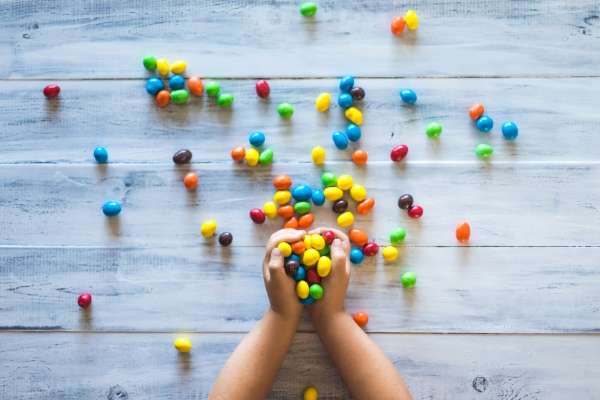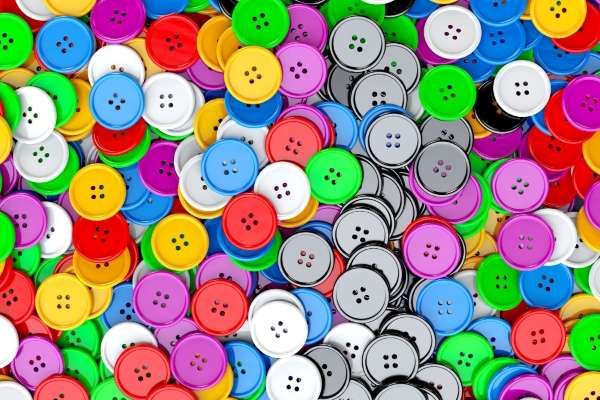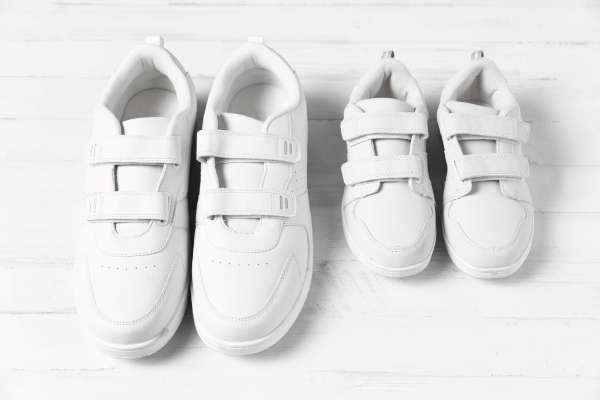In today’s data-driven world, understanding statistics is more than just a classroom subject—it’s a life skill. Now, imagine this: even your preschooler can get a grasp on this. Yes, those tiny hands that struggle to tie their shoelaces can start to wrap their minds around basic statistics concepts. And here’s the cool part: introducing these ideas at a young age doesn’t just fill their heads with numbers. It sets them up for better analytical thinking down the road.
So, where do you begin? Well, start with what they know. For instance, if they have five toys and you add two more, ask them how many they have now. This isn’t just basic math; it’s the beginning of statistics in action. Next, think about patterns. Ever noticed how kids love to line up their toys? That’s them categorizing and seeing patterns, the heart of basic statistics concepts.
Transitioning from playtime to learning might seem like a huge leap. But with the right approach, it can be more of a small step.
Understanding the Preschooler’s Mind

Preschoolers are amazing. Picture this: tiny humans, so full of energy, racing about with boundless curiosity. From ages 3 to 5, their brains are like sponges, soaking up everything. They’re not just playing; they’re exploring, trying to decipher the vast, intriguing world around them.
Now, think about their favorite games. Blocks, puzzles, and even peek-a-boo. What do they all have in common? They’re hands-on, visual, and experiential. That’s the sweet spot of their learning. These activities aren’t just fun; they’re their way of grappling with basic statistics concepts. Here’s an example. When they line up their toys from smallest to biggest, they’re unconsciously touching on the concept of order and measurement.
Transitioning this innate curiosity into more structured learning isn’t that tough. All it requires is to tap into their natural inquisitiveness. Today, they might be stacking blocks. Tomorrow? Well, they could be counting them, categorizing by color, or even making predictions on which stack will be taller. And just like that, without even knowing it, they’re stepping into the realm of statistics. Every new day, every new game, is another piece of the puzzle they’re so eager to complete.
Ten Simple Activities to Introduce Basic Statistics Concepts
Counting and Recognizing Numbers

Activity: “Count the Cookies”
Imagine a plate with a few cookies on it. Tempting, right? Now, instead of snacking, let’s use them as a fun learning tool. Have your little one count them out loud. One, two, three, and so on. Simple, right? But oh, so foundational.
Now, for the fun part. While they’re engrossed in counting, sneakily add a cookie or two, or maybe even take one away. Ask them again, “How many now?” This isn’t just about teaching them numbers. This is about laying the groundwork for basic statistics concepts. Through this playful activity, they’re not just counting; they’re also getting a feel for concepts like addition and subtraction.
See, statistics isn’t always about big numbers and complex graphs. Sometimes, it’s as simple as a plate of cookies and a curious little mind ready to learn. So next snack time, turn it into a mini math lesson. It’s fun, interactive, and oh-so-sweet in more ways than one!
Sorting and Categorizing as a Way to Learn Understand Basic Statistics concepts
Activity: “Colorful Sorting”
Imagine this scenario: a playroom floor covered in a rainbow sea of colorful balls or a mini zoo of toy animals. At first glance, it might just look like the aftermath of playtime. But let’s turn this vibrant mess into an exciting lesson!
Hand your child a little mission. Say, “Can you group these by color for me?” or “Let’s see all the lions stand with the lions and the giraffes with the giraffes.” As they dive into the task, watch those little gears turn in their heads. They’re making decisions, analyzing, and categorizing – all essential skills in understanding basic statistics concepts.
Now, here’s where the real magic happens. Once they’ve sorted their toys, kneel down beside them and point out the groups. “Look at this! You have so many blue balls and only a few red ones.” Without even realizing, your child is now brushing up against the edges of data comparison and understanding quantities.
Remember, every game has hidden lessons. And in this game, amidst the laughter and fun, your child is taking baby steps into the vibrant world of statistics. So, next playtime, scatter those toys and let the sorting games begin!

Measuring and Comparing
Activity: “Taller or Shorter?”
So, ever noticed how kids love to stack things? Be it blocks, books, or even their snacks. There’s a reason behind this fun activity. They’re not just playing; they’re naturally exploring the world of measurements.
Let’s harness this innate curiosity. Spread out some building blocks or sticks on the floor. Together, create towers of varying heights. It’s fascinating to watch their eyes light up as the towers grow taller and taller.
Now, pop in the question: “Which tower is taller?” Watch as they scan, compare, and point out their observation. Then, switch it up a bit: “Can you make one shorter than this?” You’ll be amazed at how quickly they catch on. Right there, in the midst of this playful challenge, they’re unknowingly dabbling in basic statistics concepts. They’re not only understanding heights but also developing comparative skills.
It’s all about perspective, isn’t it? What seems like a simple game of blocks is, in reality, an introduction to the fascinating world of measurements and comparisons. So, the next time they reach for those blocks, remember, they’re not just building; they’re measuring and learning.
Understanding Probability
Activity: “Coin Toss Predictions”
Ever thought a simple coin could be a gateway to learning? Let’s take a fun journey into the world of chances and predictions.
Grab a coin from your pocket or purse. Now, sit down with your child and explain there are two sides to it: heads and tails. Ask them, “What do you think? Will it be heads or tails this time?” As they excitedly make their guess, give the coin a good toss. Did their prediction come true? The excitement, the anticipation – it’s all part of the learning.
Now, here’s where basic statistics concepts subtly come into play. After several tosses, chat about the results. “We got four heads and three tails this time!” Encourage them to think if there’s a pattern or if it’s just random. Are heads always the winner? Or does tails catch up sometimes?
What we’re doing here is introducing them to the idea of probability in the most playful manner. A game of chance, where they’re not just guessing, but also starting to understand the unpredictability and patterns of events.

Graphing Simple Data to Understand Basic Statistics concepts
Activity: “Favorite Fruit Chart”
Who doesn’t love a juicy apple or a sweet banana? Let’s turn our fruit preferences into a delightful learning journey.
Gather around with your family at the breakfast table. Maybe even during a casual evening chat. Pop the question: “What’s your favorite fruit?” Jot down the answers on a paper. Let’s say Grandma loves apples, and your youngest can’t get enough of strawberries. Tally it all up, and by the end of the week, you’ll have a fun little list.
Now comes the exciting part. Sit down with your little one and together, draw out a simple bar chart. Let them color in the bars, each representing a fruit. You might notice their eyes widen as the strawberry bar gets taller than the rest.
Right here, in the midst of this colorful activity, they’re diving deep into basic statistics concepts. They’re visualizing data, understanding preferences, and seeing firsthand which fruit reigns supreme in your household.
It’s wonderful how a simple chat about fruits can be transformed into a vivid lesson about graphing and data representation.
Understand Basic Statistics Concepts Through Patterns and Sequences
Activity: “Pattern Playtime”
Think back to your childhood. Remember those delightful moments of arranging toys in a particular order or being intrigued by patterns on a dress? Kids have a natural flair for spotting patterns; it’s like a fun game for them.
Alright, let’s get creative. Lay out a mat and spread out an assortment of beads, colored pegs, or even bright buttons. Start with something straightforward: maybe a blue bead, then a yellow one, followed by blue again. Ask them, “What comes next?” You’ll probably get an eager pointing finger towards the yellow bead.
As the game progresses, make things a tad more challenging. Add a third or even a fourth color to the sequence. Watch as their eyes dart back and forth, analyzing and figuring out the sequence. And right there, in the heart of this playful challenge, they’re delving into basic statistics concepts. They’re understanding order, predicting the next in line, and recognizing patterns that, in the bigger picture, are foundational for mathematics and logic.

Averages and Middle Values
Activity: “Middlemost Marble”
Have you ever noticed the delight on a child’s face when they discover something’s right in the center of two things? Like the creamy middle of an Oreo cookie or the center sticker on a gift? That fascination with the ‘middle’ is what we’re tapping into today.
For this activity, find a clear, flat surface. Lay out seven vibrant marbles in a straight line. The array of colors is bound to captivate them. Point to the first, then the last, and ask, “Can you find the one right in the middle?” As they keenly search and identify the middle marble, praise their observation.
Now, here’s a little twist. Discuss how this middle marble is equally far from the first and the last marble. You can use terms like, “It’s the same distance from both ends” or “It’s right in the center.” The concept you’re subtly introducing is the notion of averages and middle values.
Through this exercise, they’re brushing against basic statistics concepts. They’re not just spotting the middle, but understanding its relation to the other values.
Data Collection
Activity: “Toy Tally”
Do you remember having a favorite toy as a child? That one toy you’d always gravitate towards, no matter how many others were scattered around? Let’s turn that fond memory into a learning moment for our kids.
First, grab a piece of paper and a colorful marker. Every day for a week, become a little detective and jot down which toy your child spends the most time with. Maybe on Monday, it’s the cuddly teddy, while on Wednesday, the shiny toy truck steals the show.
Now, for the grand reveal! At the end of the week, sit down with your little one. Show them the tallies, and together, count them out loud. “Look, teddy got three tallies, but the toy truck got four!” Their eyes will light up as they see the results.
Right there, amidst the giggles and pointing fingers, they’re touching upon basic statistics concepts. They’re learning about data collection and how to gather information over time to make conclusions. And the best part? Discovering which toy holds the championship belt for the week! It’s a fun and insightful way to make every day play a little more educational.
Understanding Variability to Understand Basic Statistics Concepts
Activity: “Shoe Size Lineup”
Think of all the times you’ve heard kids marvel at how something is “so big” or “so tiny”. Kids have this innate curiosity about size and differences. They’re often amazed by how things vary in the world around them.
Here’s a fun activity for a lazy afternoon. Pull out several shoes from the family’s collection – yours, theirs, maybe a sibling’s or a grandparent. Spread them out and then line them up from the teeny-tiny ones to the big, maybe even funny-looking, adult ones.
In the midst of the fun and perhaps some giggles at how big dad’s shoe is, you’re introducing them to basic statistics concepts. Specifically, they’re observing variability – how objects can differ in size, shape, or appearance. Through such playful comparisons, they begin to grasp that things aren’t always the same size and that there’s a range to consider. So, the next time they’re out and about, they’ll be more attuned to the delightful variations in the world around them!

Making Predictions to Learn Basic Statistics concepts
Activity: “Weather Watchers”
We all have our morning routines. Maybe it’s a cup of coffee, perhaps it’s stretching, or it could be gazing out the window. Why not add a touch of forecasting fun to start the day?
Every morning, as you both wake up and start the day, peek outside together. “What do you think, will it rain today? Will it be sunny?” Let your little one guess and note down their prediction on a colorful chart or a whiteboard. They might believe it’ll be stormy because of a dream they had, or maybe sunny because of the bright yellow shirt they picked out. Whatever the reason, it’s their prediction!
As evening rolls around, while winding down, revisit the day’s prediction. Compare it with how the day really turned out. “Remember you said it would be rainy? Look, it’s sunny outside!” Through this daily activity, they’re brushing up on basic statistics concepts. They’re learning the idea of making predictions and then comparing them with real outcomes. It’s a playful way to hone their observation skills and understand the beauty of nature’s unpredictability.
Key Takeaways
- Building Foundations Early On: Just as the strength of a tree lies in its deeply embedded roots, the same goes for children and their foundational skills. Introducing them to basic statistical ideas while they’re young doesn’t just make math classes in the future a breeze; it equips them with analytical thinking. This skill, once honed, aids them in understanding patterns and making connections, not just in the classroom but also in various facets of life.
- The Power of Play: The world, to a preschooler, is a vast and intriguing playground. Whether it’s stacking blocks or sorting toys by color, every game has an underlying lesson. They aren’t just playing; they’re actively learning. Each game, each toy, and every playful interaction they engage in serves as a hands-on lesson.
- Stay Consistent and Encourage: Think of learning as nurturing a garden. You can’t water a plant once and expect it to flourish. Similarly, sporadic lessons aren’t as effective as consistent engagement. Make it a point to incorporate little learning activities into their daily routine. And when they stumble upon an insight or even make a small achievement, shower them with encouragement. Your words of affirmation act like sunshine, propelling their confidence.
Conclusion
You know, when we talk about guiding our little ones, it’s not always about the big stuff. Sometimes, the magic is in the small, everyday moments. Imagine teaching them to count cookies or sort their toys. Seems simple, right? But it’s in these tiny steps that they take giant leaps in understanding the world around them.
Now, speaking of basic statistics concepts, you might wonder, “Why so early?” Well, it’s because these aren’t just math lessons. They’re life lessons. Through these playful activities, not only do they grasp the essence of numbers, but they also learn to observe, analyze, and make sense of patterns. It’s about lighting that spark of curiosity, watching their eyes light up when they find a sequence or make a correct prediction. It’s these moments, these breakthroughs, that lay the groundwork for critical thinking and a lifelong love for learning.
So, remember, it’s never too early. Dive in, explore, and let the joy of learning weave its magic. And before you know it, your child will be looking at the world with an analytical eye, all thanks to those early introductions to basic statistics concepts.
Happy teaching!

CTA (Call-to-Action):
🌟 Join Our Community! 🌟
Hey there, wonderful parents! We absolutely cherish the moments you spend teaching and playing with your little ones. So, why not share those magical moments with us? Drop a comment below, tell us about your experiences, or even better, share those candid photos! 📸 And if you’ve got any creative twists to these activities, we’re all ears!
Did this guide light up some ideas for you? If so, don’t miss out on our upcoming gems. Click that subscribe button, and let’s continue this incredible journey of early childhood education together! 🚀🧡






VABxvsyH
1
Your comment is awaiting moderation.